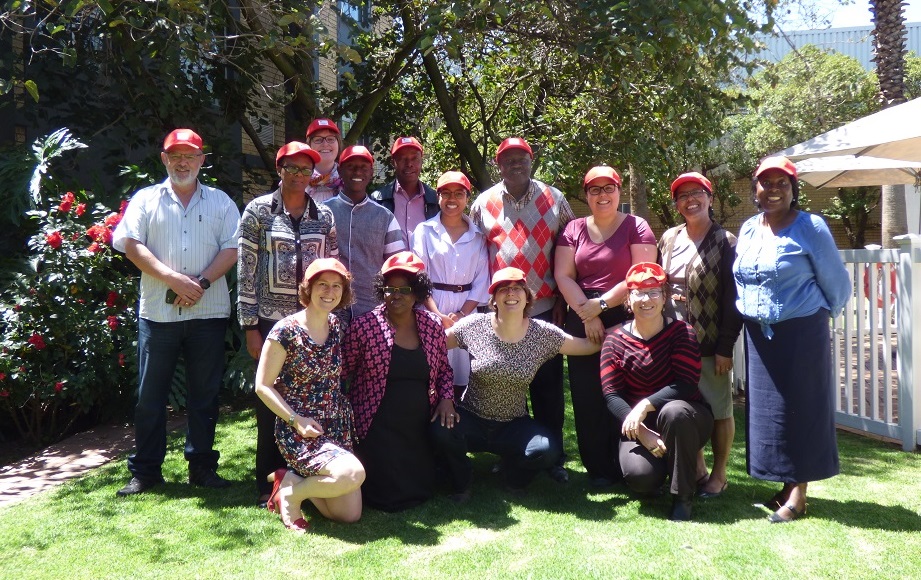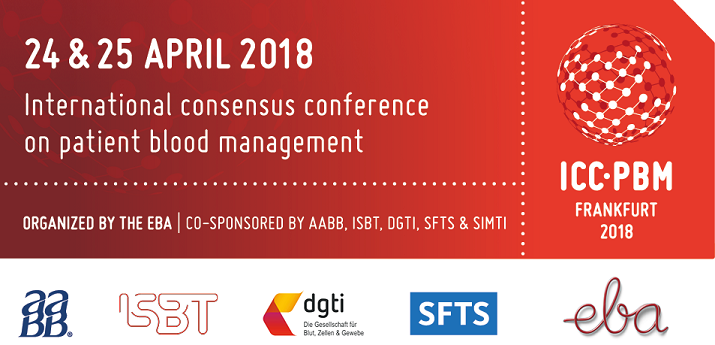2017
First aid guidelines and materials
Validation of our first aid guidelines
In 2016, Belgian Red Cross published two new first aid manuals: ‘Help! First aid for everyone’ and ‘Help! First aid for caregivers’. These manuals are scientifically substantiated by CEBaP, based on the rigorous methodology of AGREE II for guideline development. Consequently, we applied for guideline validation to the Belgian Centre for Evidence-Based Medicine (CEBAM), an independent scientific institute that assesses the methodological quality of clinical practice guidelines. In June 2017, we obtained formal validation of both guidelines, which proves that they are of sound methodological quality.
The full guideline, on which the manual ‘Help! First aid for everyone’ is based, can be consulted here. The evidence summaries developed for this guideline are available here for free (registration is required). The guideline is also available on the website of EBPracticeNet (available for free after login with eID), which contains an extensive and uniform online database of evidence-based guidelines for caregivers in Belgium.
First aid educational materials for children in sub-Saharan Africa
In March 2017, CEBaP started a new project concerning the development of educational materials that can be used to train children aged 5-18 years in first aid, within the sub-Saharan African context.
In a first phase, we developed a range of evidence summaries to determine the appropriate age to train children in certain first aid interventions, such as resuscitation, providing first aid in case of choking, a burn or a skin wound. Based on these evidence summaries, we developed an “educational pathway” that indicates at what age children are able to attain certain knowledge, skills and attitudes concerning a certain first aid topic (e.g. “Children can administer first aid correctly (skills) in the event of a choking incident from the age of 11-12 years”).
Simultaneously, based on existing systematic reviews, we made an evidence summary on the effect of providing hardware instructional materials (such as text books and flip-charts) and/or using alternative pedagogical methods (such as cooperative, constructivist and problem-solving teaching) on learning outcomes in low- and middle-income countries.
 In a second phase, in November 2017, we gathered a panel of 12 African experts from different African countries in Johannesburg, South Africa. The panel consisted of academic educational and/or pediatric experts, and first aid experts from different African Red Cross National Societies. During this expert panel meeting, the panel adapted the collected evidence to the African context, leading to an improved version of the “educational pathway” and a list of recommended educational methods and materials. In 2018, the actual first aid educational materials will be developed, validated by the same expert panel and piloted in several African countries.
In a second phase, in November 2017, we gathered a panel of 12 African experts from different African countries in Johannesburg, South Africa. The panel consisted of academic educational and/or pediatric experts, and first aid experts from different African Red Cross National Societies. During this expert panel meeting, the panel adapted the collected evidence to the African context, leading to an improved version of the “educational pathway” and a list of recommended educational methods and materials. In 2018, the actual first aid educational materials will be developed, validated by the same expert panel and piloted in several African countries.
Systematic reviews on first aid topics
We published two systematic reviews on first aid topics, concerning effective methods for tick removal and the use of emollients to prevent frostbite. Several other systematic reviews are submitted for publication, such as the ones on first aid for acute oral poisoning and first aid for syncope.
Social care
In the ‘Bridging the Gap’ project, Belgian Red Cross volunteers join the teachin g staff in schools in order to improve personal development goals in at-risk children with poor performance. CEBaP developed evidence-based guidance for these volunteers to help them choose the right didactical approach for supporting these children by performing several systematic literature searches. During a consensus meeting with relevant stakeholders, we discussed the applicability and meaningfulness of these activities for volunteers in the school context.
g staff in schools in order to improve personal development goals in at-risk children with poor performance. CEBaP developed evidence-based guidance for these volunteers to help them choose the right didactical approach for supporting these children by performing several systematic literature searches. During a consensus meeting with relevant stakeholders, we discussed the applicability and meaningfulness of these activities for volunteers in the school context.
The evidence-based guidance that we developed is currently being used and is integrated in the training of ‘Bridging the Gap’ volunteers by the Belgian Red Cross. Different brochures for different target groups (i.e. schools, volunteers) have been developed to recruit schools and volunteers for this project. In addition to the training of volunteers, a train-the-trainer package, in which trained volunteers will be asked to train other volunteers, is currently under development and will be tested in the near future. A paper on this project has been published in The International Journal of Evidence-Based Healthcare.
Sanitation and hygiene promotion programs
In 2017, we finalized our Campbell systematic review on the effect of promotional programs for behaviour change in handwashing and sanitation in developing countries. In addition to the full systematic review, a summary review was published on the website of 3ie (International Initiative for Impact Evaluation), as well as a policy brief, which is a 3-page summary for policymakers. In October, we presented our results during a webinar that was hosted by the Water Supply & Sanitation Collaborative Council (WSSCC).
Based on our review, we concluded that there is no single promotional approach that is most effective. However, several promising promotional elements were identified, such as working in a community-based way and using interpersonal communication. We also identified several barriers and facilitators for implementation of a promotional approach, such as accessibility of the implementer and clear communication between the implementer and the community.
Throughout the project we used a Theory of Change (ToC), which is a model showing the links between our intervention and outcomes of interest. A publication on the added value of using a ToC, and more detail on how it was developed, has been accepted for publication in the International Journal of Environmental Health Research.
Blood donation and transfusion
Substantiation of the medical questionnaire for blood donation
Endoscopy
People who underwent an endoscopic examination are temporarily deferred from blood donation because of the reusable nature of the endoscope and close contact with the inner body. Therefore, we conducted a systematic review to identify the best available evidence on the association between an endoscopic examination and the risk of transfusion-transmissible infections.
Based on sensitive search strategies in different databases, we screened 7571 references and finally included 29 observational studies. We concluded that an endoscopic examination is associated with an increased hepatitis B or hepatitis C virus infection risk. The level of evidence was considered as very low due to the type of study design (i.e., observational) and indirect populations (i.e., no blood donor populations). This implies that further research of higher quality is needed to formulate stronger evidence-based recommendations on endoscopic examination as a blood donor deferral criterion.
This systematic review was published in Transfusion and can be downloaded here.
Epilepsy
To guarantee safety of the donor, epilepsy patients in Flanders are temporarily excluded from blood donation. They have to be seizure- and medication-free for at least three years before they can donate blood.
With a cross-sectional survey we showed that other blood transfusion centres worldwide use this, but also different deferral policies. Therefore we performed a systematic review, but we could only identify limited research that was not able to measure adverse events in (former) epilepsy patients who donate blood.
Both parts of this project were recently accepted in Vox Sanguinis and Epilepsy Research, respectively.
Men who had sex with men
One of the most controversial eligibility criteria for blood donors is the exclusion of men who have had sex with men. However, a better knowledge of the rationale behind the used exclusion criteria might increase understanding of and therefore compliance with this criteria. To test this hypothesis, we conducted a survey among a representative sample of the Flemish population.
It was clear that knowledge concerning the exclusion criteria for blood donation at baseline was limited. Furthermore, there was more acceptance towards men who have had sex with men than towards other risk populations as potential donors. On the other hand, providing people with additional information on the reasons for exclusion resulted in a more stringent opinion concerning the exclusion of risk populations, including men who have had sex with men. This indicates that clear communication concerning the reasons for exclusion is necessary to increase people’s understanding.
Read more about this survey in our paper, published in Blood Transfusion.
Ongoing systematic reviews
Several other systematic reviews to investigate the different exclusion criteria for blood donation are ongoing. Topics that are currently being investigated are the possible risk of infection after a piercing or tattoo, sexual risk behaviour or a visit to the dentist.
Patient Blood Management
Patient Blood Management (PBM) aims to optimize the care of patients who might need a blood transfusion. The American Association of Blood Banks (AABB), the International Society of Blood Transfusion (ISBT), the Deutsche Gesellschaft für Transfusionsmedizin und Immunhämatologie (DGTI), the French Society of Blood Transfusion (SFTS) and the European Blood Alliance (EBA) are committed to advance PBM. These organizations, jointly with several partners will organize a two-day consensus conference (24 & 25 April 2018 in Frankfurt, Germany) to present the available evidence on PBM and develop recommendations.
The role of CEBaP is to identify the best available evidence on different PICO questions within the following PBM topics: 1) Red Blood Cell (RBC) transfusion triggers, 2) education and implementation of PBM and 3) preoperative anemia. Secondly, we will ensure that the GRADE approach is used to formulate evidence-based recommendations and we will provide support in developing a formal consensus methodology that will be used, namely the Consensus Development Conference format.

Primary field research
Together with the Nepal Red Cross Society, we are investigating the retention of first aid knowledge and skills in laypeople. More than 400 people participated in this randomized controlled trial. Over a period of 2 years, we have measured the first aid knowledge and skills of the participants and the influence of retraining. The project has been successfully completed and the results will be published in 2018.
Furthermore, in collaboration with the Swiss Federal Institute of Aquatic Science and Technology (EAWAG) and the Malawian Red Cross Society, a study was started in 2016 in Malawi to investigate which factors (knowledge, attitude, values, skills and self-efficacy) influence or determine certain behaviour changes in water, sanitation and hygiene projects. Based on the findings of the midline survey performed in 2017, specific new behaviour change techniques were introduced. The effect of these techniques will be measured in 2018.

